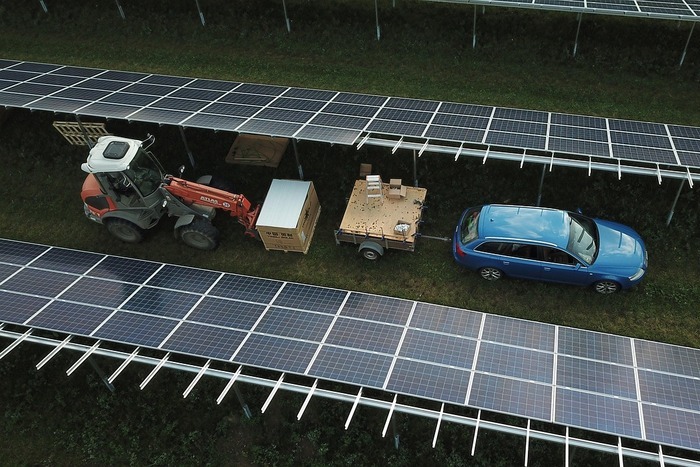The Alliance for American Solar Manufacturing and Trade filed new anti-dumping and countervailing duty petitions in the US against imports of crystalline silicon photovoltaic cells, whether or not assembled into modules, from India, Indonesia, and Laos, Mercom reported.
These petitions alleged that companies based in India and largely Chinese-owned manufacturers operating in Indonesia and Laos are engaging in illegal trade practices by undercutting the US solar manufacturing industry and flooding the market with cheaper imports. The petitions identified significant dumping margins for each country involved. India faces a margin of 213.96%, Indonesia 89.65%, and Laos between 245.79 and 249.09%.
Formal investigations may be initiated by August 6, 2025. These petitions have been filed at a time when there is an increase in Indian solar exports to the US In the first quarter of 2025. Indian solar module and cell exports increased by 26.1% quarter-over-quarter, reaching $267.6 million (~₹23.1 billion), up from $212.2 million (~₹17.92 billion) in the previous quarter. The US was by far the largest destination, accounting for 99.5 % of India’s total solar exports during that period.
Use of ALMM-listed Solar Cells Mandatory a Month After List Publication – Mercom India
Government projects mandated to use solar modules from the Approved List of Models and Manufacturers (ALMM -List 1) wont have to comply with ALMM List-II for solar cells, if the bid submission deadline is on or before the cut-off date, Mercom reported.
The outlet said the cut-off date will be one month after the publication of the first ALMM List for cells. “If the ALMM List for solar cells is published on August 1, 2025, then the cut-off date will be September 1, 2025.” the outlet explained. The projects will be exempt from using solar cells from the ALMM List-II even if their date of commissioning is beyond June 1, 2026. “However, there will be no relaxation in the mandate of the domestic content requirement for MNRE’s programs, such as Components B and C of PM-KUSUM, PM Surya Ghar: Muft Bijli Yojana, and Central Public Sector Undertakings Scheme Phase-II.The ALMM for solar cells will become effective from June 1, 2026,” the outlet noted.
Around 90% of renewable power projects globally are cheaper than fossil fuel alternatives: IRENA
Most newly commissioned renewable energy is cheaper for electricity generation than most fossil fuels worldwide, a report by the International Renewable Energy Agency (IRENA) showed, reported Reuters.
The newswire explained that a target was set at the COP28 U.N. climate conference in 2023 to triple the amount of renewables, such as wind and solar, to keep a 1.5 degree Celsius (2.7 Fahrenheit) warming limit this century within reach. The IRENA report said: “last year, 582 gigawatts of new renewable energy capacity, such as hydropower, solar, wind and geothermal, was added globally. This was nearly 20% higher than in 2023. Around 91% of the utility-scale projects commissioned were more cost effective than fossil fuel alternatives,”.
The report noted that solar photovoltaic (PV) was 41% cheaper on average than the lowest-cost fossil fuel alternatives, such as gas, while onshore wind projects were 53% cheaper. The cost of battery energy storage systems has declined by 93% since 2010, the report added.
‘India to overtake US in clean energy capacity’
Columnist David Fickling wrote in Bloomberg that India is likely to “overtake” the US in clean-power deployment, in a “remarkable turnaround for a country whose renewable industry looked like a lost cause” less than two years ago.
Renewables made up 92.5% of all new electricity capacity additions
The UN drawing on data from multiple international agencies found that renewables made up 92.5% of all new electricity capacity additions and 74% of electricity generation growth in 2024, FT reported, adding that: “In value terms, $2tn was invested in clean energy last year, or $800bn more than fossil fuels, up almost 70% over 10 years.”
China’s new energy capacity fills global ‘green gap,’ not ‘overcapacity’
China said its new energy production capacity can fill the “green gap” in the world, and it is a contribution to the green development, not “overcapacity,” as described by Europe, reported Global Times. Chinese Foreign Ministry spokesperson said: “The so-called “China’s overcapacity” is essentially a one-sided understanding of the market supply and demand relationship in the context of economic globalization, and is an excuse for protectionist measures,’
The International Energy Agency estimated that the global gap in EVs will reach 27 million vehicles in 2030. China’s new energy production capacity is advanced production capacity that can fill the world’s “green gap”, Guo noted.
He said industrial subsidy policies are adopted across countries, and that the EU itself has also provided substantial subsidies for the development of related industries, and should not pursue a “double standard” on the issue of industrial subsidies.
About The Author
You may also like
Non-Fossil Fuels Generates One-Third of India’s Electricity in 2025
India on track to achieve 2030 clean energy target
India to add 45GW solar capacity in FY 2026: Study
Government Proposes for ALMM Expansion for Solar Backward Integration
China’s renewable energy expansion can fuel global energy transition: Report

